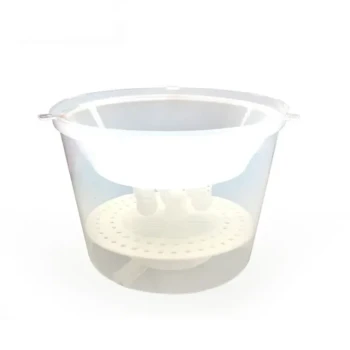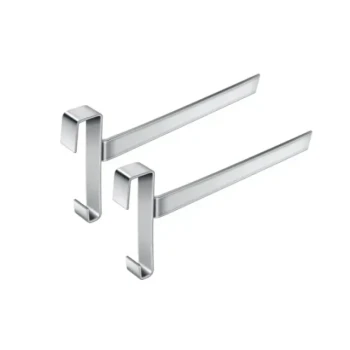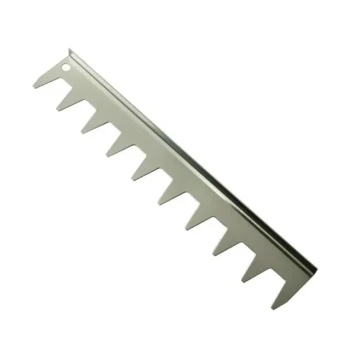The primary reason to reduce a hive entrance after transferring a nucleus colony is for defense. A "nuc" is a small, developing colony with a limited number of guard bees, making it highly vulnerable. Reducing the entrance to its smallest possible opening creates a single, defensible chokepoint that the colony's small security force can effectively protect from robbers and pests.
A nucleus colony is like a small fortress with only a handful of soldiers. Leaving the main gate wide open invites disaster. Reducing the entrance is a critical management decision that allows the colony to protect its resources and focus all its energy on internal growth.
Why a Large Entrance is a Liability
A standard hive entrance is designed for a full-strength, bustling colony. For a small nuc, this large opening is not an asset but a significant weakness that threatens its survival in several ways.
The Problem of Defense
A new nucleus colony has a small population and, therefore, a very small force of guard bees. They cannot patrol a wide, multi-inch entrance effectively.
This makes the hive a prime target for robber bees from stronger, nearby colonies that can easily overpower the guards and steal the nuc's precious honey stores. It also makes them vulnerable to pests like yellow jackets and wasps, which prey on larvae and adult bees.
The Challenge of Climate Control
Bees work constantly to maintain a stable internal temperature and humidity, which is critical for raising brood. A large, open entrance creates a draft, forcing the small cluster of bees to expend far more energy on climate control.
This diverted energy comes at a direct cost to colony development, slowing down comb building, brood rearing, and foraging.
Understanding the Trade-offs
While reducing the entrance is critical for a new colony, it's important to understand the potential downsides, which become more relevant as the colony grows.
Reduced Ventilation
The most significant trade-off is reduced airflow. On extremely hot and humid days, a tiny entrance can make it difficult for the bees to cool the hive effectively.
You may see bees "bearding" (clustering on the outside of the hive) to escape the internal heat. While this is normal behavior, excessive bearding can indicate the entrance is now too small for the colony's size and the current weather.
Potential for Traffic Jams
As the colony's population explodes, the small entrance that once protected them can become a bottleneck. This can slow down foragers, reducing the hive's overall efficiency during a strong nectar flow.
When to Expand the Entrance
The decision to open the entrance back up should be based on observation, not a strict calendar. The bees will show you when they are ready.
Monitor Colony Growth
The most reliable indicator is population size. Once the bees have drawn out comb and are actively using most of the frames in their first hive body (typically 7-8 frames in a 10-frame box), they have the numbers to defend a larger space.
Observe Foraging Activity
Watch the entrance during peak foraging hours. If you see a constant, busy stream of bees coming and going without creating a "traffic jam" at the entrance, they are managing well. If you see congestion and bees waiting to get in or out, it's time to give them more room.
Making the Right Choice for Your Colony
Use the colony's stage of development as your guide for managing the entrance size.
- If you have just installed a new nuc: Reduce the entrance to its smallest setting (typically about 1 inch) immediately to maximize defensibility.
- If your colony is growing and fills most of its first box: Consider opening the entrance to a medium setting (around 3-4 inches), especially if you see signs of traffic congestion.
- If your hive is strong, established, and populous: The colony is likely ready for the full entrance opening, but always remain vigilant for robbing pressure, especially during a nectar dearth.
Ultimately, careful observation is your most powerful tool for ensuring a new colony not only survives but thrives.
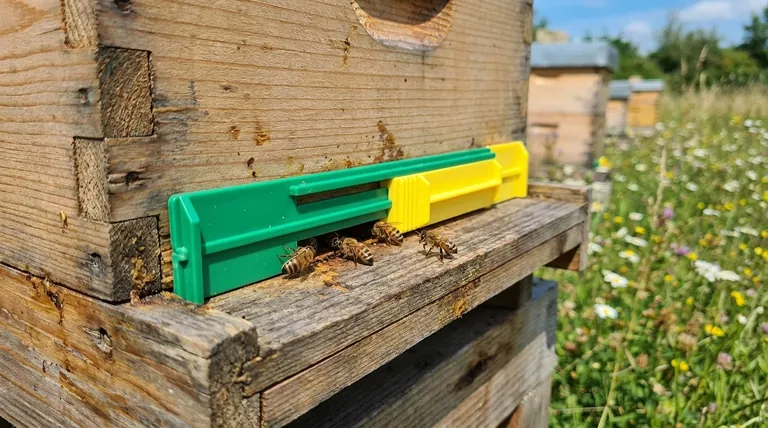
Summary Table:
| Hive Stage | Recommended Entrance Size | Primary Reason |
|---|---|---|
| New Nuc Installation | Smallest setting (~1 inch) | Maximize defensibility for a vulnerable colony |
| Growing Colony (fills first box) | Medium setting (~3-4 inches) | Balance defense with forager traffic flow |
| Strong, Established Hive | Full entrance opening | Accommodate large population and foraging activity |
Equip your apiary for success with HONESTBEE.
A strong start is crucial for every nucleus colony. At HONESTBEE, we supply the durable, reliable beekeeping supplies and equipment that commercial apiaries and beekeeping equipment distributors trust to protect their investments and ensure healthy hive development.
From secure entrance reducers to full hive systems, our wholesale-focused operations provide the tools you need to manage your colonies effectively.
Contact our team today to discuss your wholesale needs and discover how HONESTBEE can support your beekeeping success.
Visual Guide
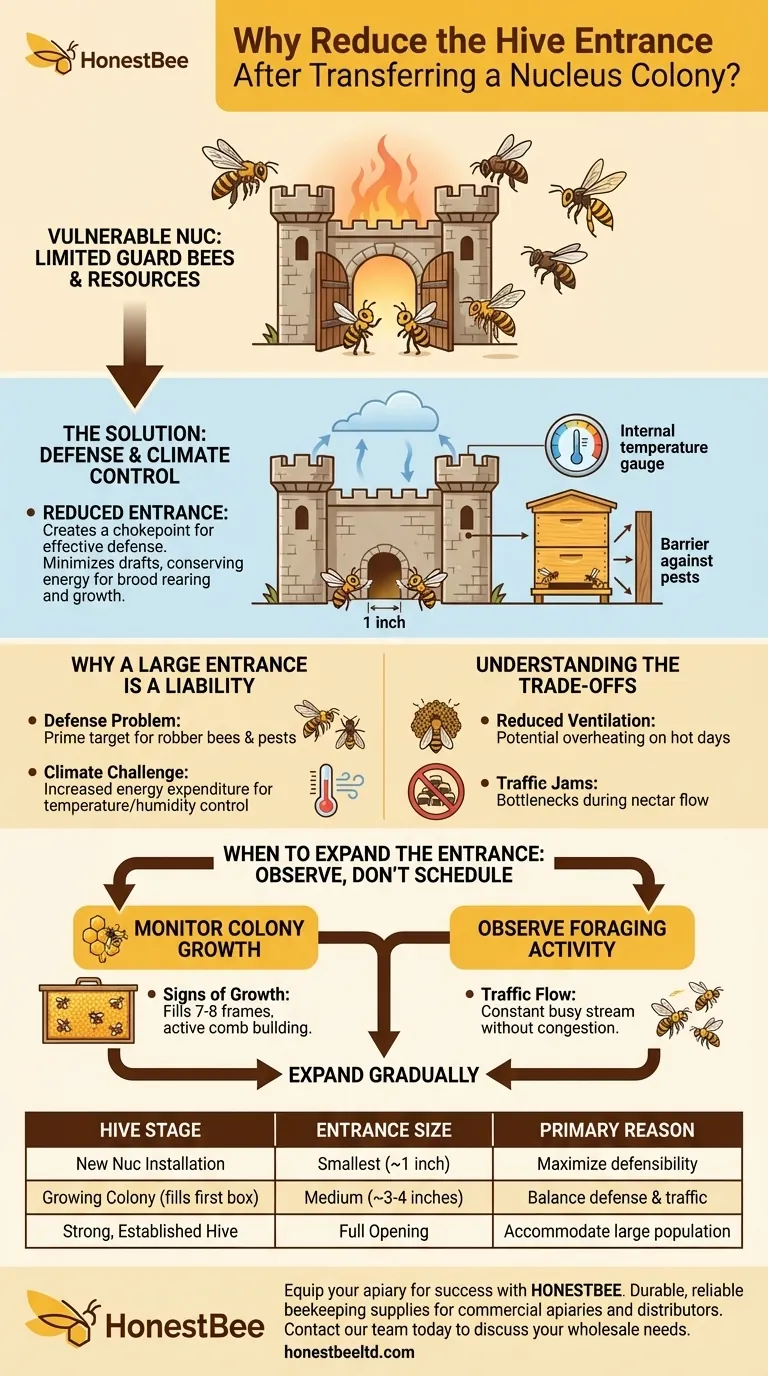
Related Products
- Multi-Functional Sliding Hive Entrance for Beekeeping
- Multi-Functional Rotary Hive Entrance Disc for Beekeeping
- HONESTBEE Advanced Ergonomic Stainless Steel Hive Tool for Beekeeping
- Beehive Entrance Discs Plastic Bee Entrance Disc for Bee Hives
- Professional Insulated Winter Hive Wrap for Beekeeping
People Also Ask
- How does the sliding design of the entrance reducer benefit beekeepers? Achieve Ultimate Hive Control
- How can a Langstroth hive entrance be adjusted? Mimic Natural Bee Preferences for a Healthier Hive
- How does entrance configuration vary seasonally for beekeepers? A Guide to Year-Round Hive Health
- What size is the entrance hole in a native bee hive? The 13mm Standard for a Thriving Colony
- What are the different entrance sizes for an 8 or 10-frame Langstroth hive? A Guide to Seasonal Management








